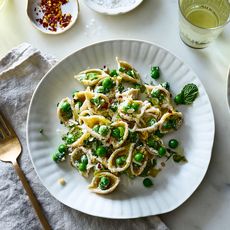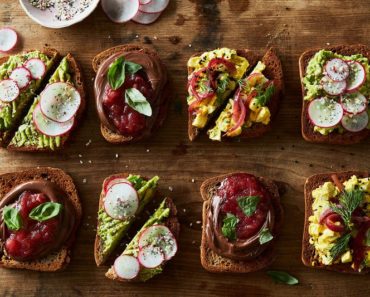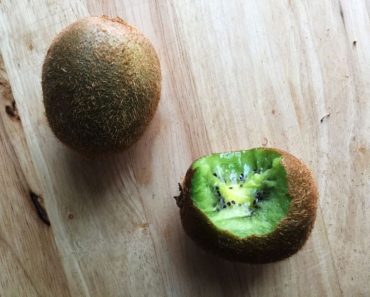In late March, we made the brown butteriest cauliflower with our new favorite vegetable technique: the blanch and satué. Basically, you quarter a head of cauliflower, boil in salty water until just tender, then sauté in so much butter—plus dates and capers, lemons and parsley.
The beauty of this technique is, you can change all of that up. It doesn’t have to be cauliflower or butter, or dates or capers, or lemons or parsley. After you master the method—if you know how to boil water and sauté anything, you already have—you can start mixing and matching.
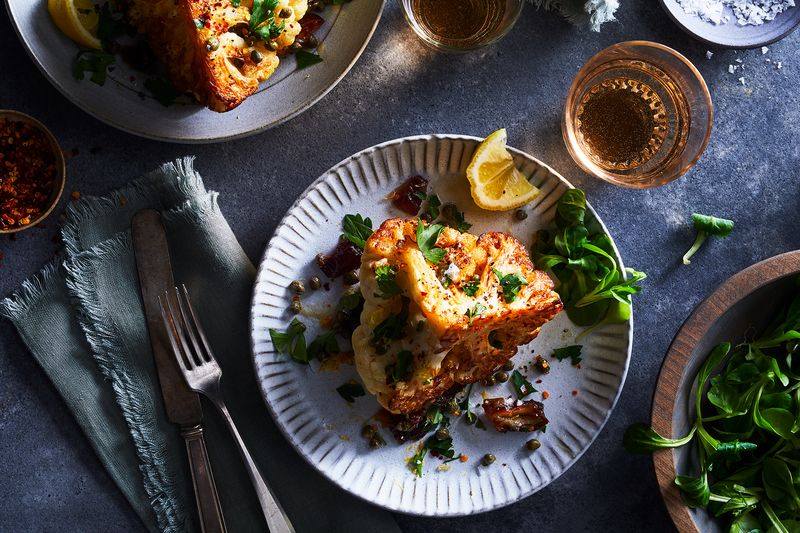
by Emma Laperruque
Let’s say you’re starting with green peas. These little life savers always live in my freezer for those nights when the pantry is bleak and the fridge, bleaker. Bring a pot of water to a boil. Meanwhile, caramelize yellow onions (or red, whatever is around works) in a skillet. Blanch the peas—to wake them up from the freezer—then toss them with the onions. Add some thick yogurt and just-cooked pasta, plus cheese, please, and dinner’s ready.
As someone who always has pasta and onions in the pantry, yogurt and cheese in the fridge, I’ve made some version of this Genius Diane Kochilas-inspired meal countless times. But it was only when I was writing about blanching and sautéing that I started to wonder about all the springy possibilities, about using the peas as a trampoline, and jumping up and down on their bright, cheery color. Boing! Boing!
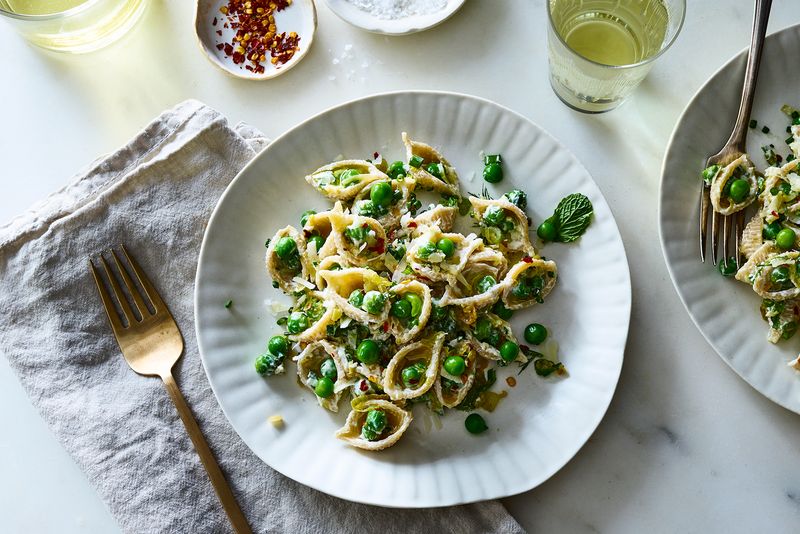
Photo by James Ransom
- Instead of onions: leeks, scallions, garlic, and chives. So, more or less, every other allium. Amber, sultry caramelized onions are as autumnal as a thick-knit sweater. On the other side of winter, onions are more colorful and punchy. The garlic gets added toward the end, so it loses some of its bite—but not all of it. And the chives go in raw, along with…
- Fresh herbs: lots of them. I opted for parsley, dill, and mint. You could do basil, tarragon, thyme, or oregano—all to taste. With the big, leafy herbs, I like to leave them whole or barely chop (or tear) them. A good rule of thumb here: The more easily the herb bruises (looking at you, basil), the less you process it.
- Instead of tagliatelle: whole-wheat shells. Of course, this is entirely up to you. I always reach for whole-wheat pasta and, here, I like the way it grounds an otherwise tangy, bright dish. But, if you find the nutty flavor distracting, skip it. And the shells: I love the way the cups hold (even hug!) the petite peas. Penne or fusilli or any other short shape are great, too.
-
3
leeks -
12
scallions -
3
tablespoons extra-virgin olive oil, divided -
1 1/2
tablespoons kosher salt, plus more to taste -
2
garlic cloves, minced or Microplaned -
3
cups frozen green peas -
1
pound whole-wheat pasta shells -
2
cups Greek yogurt, room temperature -
1
cup grated pecorino -
1/2
cup finely chopped chives -
1/2
cup flat-leaf parsley leaves -
1/2
cup barely chopped dill -
1/2
cup barely chopped mint
What’s your favorite spring pasta recipe? Give us all the deets in the comments.
(via Food52)

